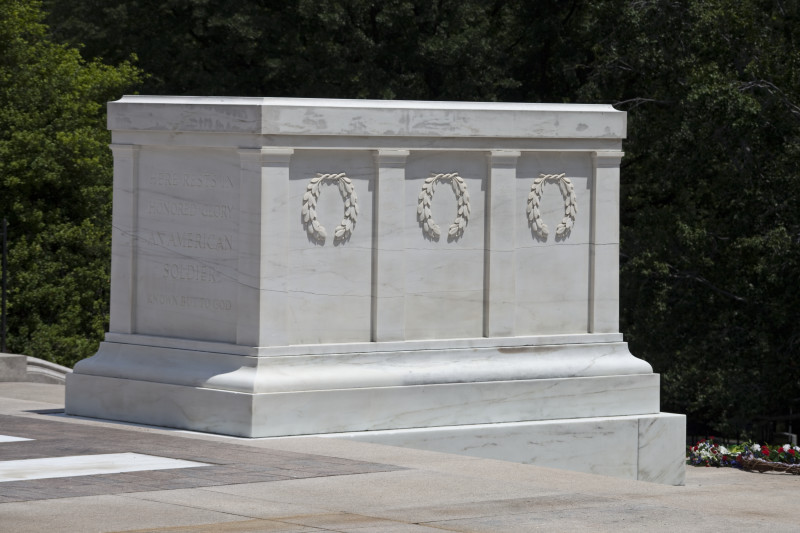
At the end of 1924, at night in Saski Square, an anonymous founder (to whom the Union of Polish Associations of the Republic turned out to be after a few years) laid a sandstone slab with an engraved cross and the inscription "To the Unknown Soldier, Fallen for the Homeland", which later determined the location of the monument.

The Committee asked the public for voluntary taxation for this purpose (1% of salary). Since the state was unable to cover the costs of the construction from the budget, an appeal was made to the public. In November 1923, by order of the President of the Republic of Poland Stanisław Wojciechowski, the Provisional Organisational Committee for the Construction of the Monument to the Unknown Soldier was set up, composed of representatives of the Generalicia of the Polish Army, and later of the scientific and artistic community. The erection of the monument was preceded by discussions about its form and location. Representatives of the highest civil and military authorities were involved in the project. three years after regaining independence. In Poland, efforts to build the monument began in 1921, i.e. France and Great Britain, where the first graves of the unknown soldier were created in 1920, were followed by other countries. The idea of commemorating the nameless heroes who died for their homeland was born after World War I in France. The tomb illuminating system consisting of 68 LED lamps and 12 traditional headlights. Eclectic candles (formerly classicistic) in front and back of the monument. On the outer axes of arcades - four large boilers with earth from World War II battlefields (originally 4 candles).

Eternal torch at the head (form changed in relation to the pre-war one). Above the tomb a lamp (originally painted fresco with laurel wreath and 2 metal lanterns). The tombstone made of grey polished granite (formerly sandstone). The bars bear the highest military decorations: Virtuti Militari Cross (in the middle), Grunwald Cross and the Cross of Valour. Arcades from the side of the Saxon Garden filled with ornamental bars designed by Henryk Grunwald. On the pillars there are black granite tablets with inscriptions. The tomb is integrated into a three-course fragment of a crippled colonnade of the non-existent classicist Saxon Palace (about 5 m high).


 0 kommentar(er)
0 kommentar(er)
